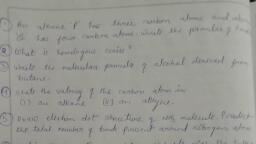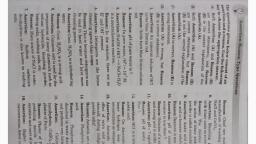Question 1 :
The membrane of a drum vibrates to produce sound. Similarly the string of a sitar vibrates to produce sound. Based on these two examples answer the following question. Which part of a whistle vibrates to produce sound?
Question 3 :
Assertion: The quality of sound and pitch remain the same when the closed end or a pipe is suddenly opened.
Reason: When the closed end is opened the pitch is doubled and the quality becomes changed.
Question 6 :
A small bee produces sound , while it moves. The sound is created due to
Question 7 :
Echocardiography is used to diagnose heart diseases which utilises infrasonic waves.
Question 8 :
________ is the characteristic of a musical sound by a which a loud sound can be distinguished from a faint sound even though both have the same pitch.
Question 9 :
When we hold a thin plastic ruler firmly on a bench:
Question 10 :
The sound waves which cannot be heard by a human ear are called.
Question 13 :
The lowest pitch out of the following sources is that of a
Question 16 :
A human heart on an average beat 72 times a minute. Calculate its frequency
Question 17 :
Assuming that the period of vibration of a tuning fork depends upon the length $l$ of its prongs density $\rho$ of its material and the elastic constant $E$ of its material what would be the formula for the period of its vibration.
Question 18 :
How does a sound making object differ from one that is silent?
Question 19 :
Frequency of vibration of a particle is 10 Hz. If the amplitude of vibration is doubled, what will be the change in frequency of vibration
Question 21 :
If speed of infrasonics, audible and ultrasonics waves are $v_i, v_a$ and $v_u$ then.
Question 22 :
If you go on increasing the stretching force on a wire in a guitar, its frequency
Question 24 :
Sound waves having the following frequency are audible to human beings:<br>
Question 26 :
Assertion: In the case of a stationary wave, a person hear loud sound at the nodes as compared to the antinodes.
Reason: In a stationary wave all the particles of the medium vibrate in phase.
Question 27 :
When tuning a violin, a string is tightened. The musical note being played on the string becomes higher in pitch.
Question 29 :
Assertion: Every vibrating body is a source of sound.
Reason: All sounds are audible.
Question 30 :
The sounds having frequency of $20$ Hz to $20,000$ Hz are
Question 31 :
The persistence of hearing for human beings is not more than
Question 33 :
A key of a mechanical piano struck gently and then struck again but muchharder this time. In the second case<br>
Question 34 :
Two tuning forks of frequency 256 and 258 vibrating per second are sounded together, then time interval between consecutive maxima heard by the observer is.
Question 37 :
In the following statements , tick (T) against those which are true , and False against those which are false :<br>The unit of loudness of sound is decibel (db)
Question 38 :
The range of the wavelength of audible sound that travels with a velocity of 330 m s$^{-1}$ at 0$^{\circ}$ C is 16.5 m - 16.5 mm.<br/>
Question 40 :
The waves produced by simple pendulum (having time period $2$ seconds) are.
Question 41 :
Which of the following measure can be taken to control noise pollution in our surroundings?
Question 42 :
Different musical instruments sound different even when they play a note with the same pitch.
Question 43 :
When we hear a sound, we can identify it source from
Question 44 :
The bells of a temple are made of large size . It is for :
Question 45 :
The time period of a sound wave from a piano is $1.18\times10^{-3} s$. Find its frequency.
Question 46 :
State whether the given statement is True or False :<br/>The part of the ear is damaged most easily by continued exposure to loud noise is stirrup.
Question 47 :
How does the sound produced by a vibrating object in a medium reach your ear?
Question 49 :
If we strike a water-filled bowl with spoon, then why there is variation in the sound produced due to change in water level ofthe bowl?
Question 50 :
On the basis of following features identify correct option:<br>I. It is the characteristic of a sound.<br>II. It distinguishes an acute or a shrill note from a dull or flat note.

































